1. Use Disposable Plastic Bottles

Starting in 2025, the National Park Service (NPS) has officially reinstated and expanded bans on the sale of single-use plastic water bottles across most U.S. national parks. This is part of a larger federal push to reduce plastic waste on public lands. While you can still bring your own plastic bottles, the parks are encouraging reusable alternatives by installing more water refill stations. It’s a small change with a big environmental impact.
This reversal follows a 2022 directive from the Department of the Interior to phase out single-use plastics by 2032, and the parks are taking the lead. The Grand Canyon, which originally led this charge over a decade ago, is once again setting the tone. Visitors are urged to plan ahead and bring their own bottles or purchase park-branded metal ones. It’s a shift that might feel inconvenient at first, but it’s all in service of preserving those sweeping vistas for the long haul.
2. Fly Personal Drones
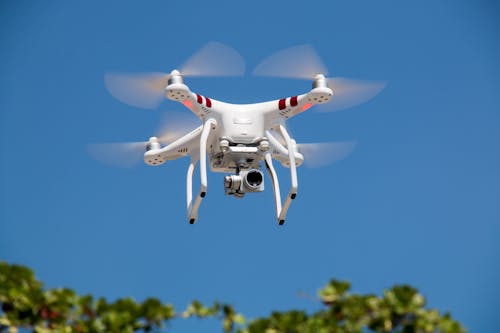
You might’ve seen those stunning aerial shots on Instagram, but if you were hoping to recreate them with your own drone, you’re out of luck. As of 2025, flying personal drones is explicitly prohibited in all U.S. national parks, including during permitted activities like backcountry hiking or photography. The reason? Wildlife disruption and visitor safety.
Rangers report that drones have scared nesting birds, agitated bison herds, and even caused a few near-misses with hikers on trails. While drones were never really welcomed with open arms, enforcement is now stricter than ever. The parks want to keep the skies clear for wildlife—and for emergency aircraft that may need access. So for now, your drone will have to sit this trip out.
3. Smoke Marijuana (Even Where It’s Legal)
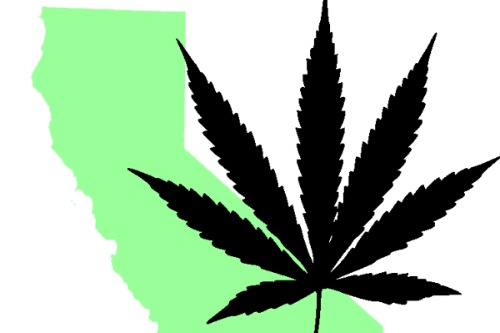
Even though recreational marijuana is legal in over half the U.S., that doesn’t mean you can light up in a national park. In 2025, it remains illegal to use or possess marijuana on federal land—including all national parks—regardless of state law. This is because the parks are managed under federal jurisdiction, where cannabis is still classified as a Schedule I drug. And yes, rangers will confiscate it if you’re caught.
This rule catches a lot of people off guard, especially in places like Colorado or California. But the policy hasn’t budged, even with the changing cultural climate. Some visitors have been cited just for smoking in their car within park boundaries. So if you’re planning a relaxing nature trip, keep the edibles at home.
4. Camp Outside of Designated Zones
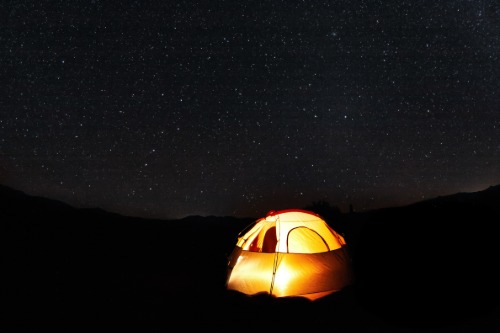
Backcountry freedom sounds romantic, but in 2025, pitching your tent wherever you please is a no-go in most parks. Nearly all national parks have tightened rules around dispersed camping, limiting it to designated zones or requiring advance permits. This is largely due to a surge in trail erosion, human waste, and vegetation damage caused by unofficial campsites. Rangers are trying to protect fragile ecosystems that don’t bounce back easily.
Popular spots like Yosemite and Glacier now enforce strict “camp only where marked” rules, and hefty fines apply to violators. These measures aim to concentrate foot traffic and reduce habitat disruption. In many areas, GPS-tracked permits are being used to monitor compliance. It might feel less spontaneous, but the payoff is cleaner, safer wilderness for everyone.
5. Bring Firewood from Home

Bringing your own firewood might seem like a harmless way to save a few bucks, but it’s now banned in most national parks. The issue? Invasive insects and tree diseases hitch rides on untreated or out-of-area wood. In 2025, the NPS is enforcing “buy it where you burn it” policies more strictly than ever.
Many parks now have inspection stations or simply prohibit outside wood entirely. Visitors are asked to purchase firewood locally to avoid introducing pests like the emerald ash borer or gypsy moth. These invaders have devastated forests in several states, and national parks are especially vulnerable. So leave the bundle in your trunk, and pick one up from a park-approved source instead.
6. Feed Wildlife

Yes, it’s still tempting to toss a chipmunk a cracker or lure a deer for a selfie, but in 2025, feeding wildlife is a major no-no with real consequences. The practice disrupts natural foraging behaviors and can lead to aggressive animal encounters. Even if your snack seems harmless, human food can cause health problems for animals. Plus, habituated wildlife often have to be relocated—or worse, euthanized.
Rangers in places like Yellowstone and Zion have seen an uptick in food-conditioned animals approaching cars and campsites. The new rules emphasize a strict “pack it in, pack it out” approach to all food waste. Some parks have added hefty fines or even banned coolers on open trails. Enjoy the wildlife from a distance—it’s better for them and you.
7. Use Generators at Night
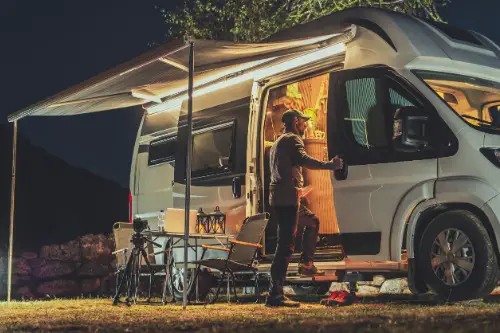
If you’re camping in a national park this year, you’ll want to double-check generator rules. In 2025, many campgrounds have enacted quiet hours that ban generator use entirely between 8 p.m. and 8 a.m. The reason is simple: noise pollution. Generators disrupt the peace, bother fellow campers, and disturb nocturnal wildlife.
Some parks, like Joshua Tree and Great Smoky Mountains, now only allow solar-powered solutions or designated “generator-friendly” zones. For RVers, this means planning ahead with batteries or alternative power setups. Rangers are also cracking down more consistently on noise complaints. Silence, after all, is part of what makes these places so special at night.
8. Bring Pets on Most Trails
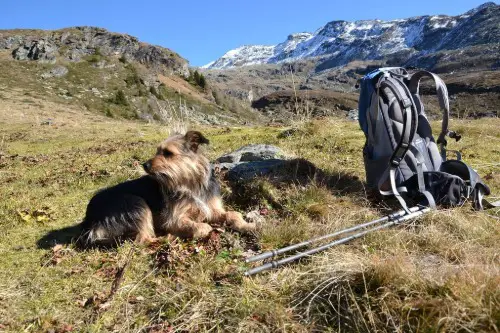
We all love our dogs, but in 2025, more parks have restricted pets from hiking trails than ever before. While pets are still allowed in some areas, most trails now prohibit them due to concerns about wildlife interactions, disease transmission, and trail damage. Even leashed dogs can spook wildlife or disturb nesting birds. And not all pet owners are diligent about waste cleanup.
Parks like Rocky Mountain and Acadia have tightened enforcement and added clear signage at trailheads. If you do bring a pet, you’ll need to stick to paved roads, campgrounds, or specific pet-approved paths. For safety and preservation, it’s best to check each park’s guidelines in advance. Or consider a dog-friendly alternative outside the park boundary.
9. Go Off-Trail for Photos
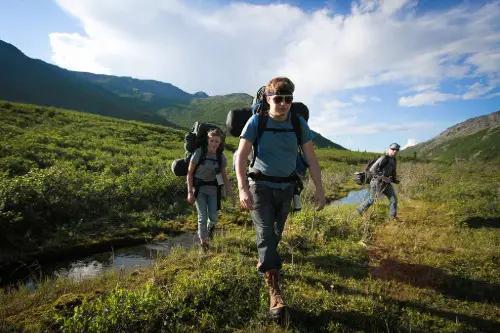
You’ve probably seen people tiptoeing into flower fields or climbing a rock ledge for that perfect shot, but in 2025, that’s likely to get you a citation. National parks are enforcing stricter rules against going off-trail, especially in sensitive habitats like alpine meadows and desert crusts. Even a few footsteps can do serious damage to fragile ecosystems. And once an unofficial path is worn in, others tend to follow.
Social media has fueled a rise in this behavior, with influencers unintentionally encouraging off-trail wandering. In response, some parks have even installed rope barriers and volunteer patrols near popular photo ops. Rangers are reminding visitors: if the shot means leaving the trail, it’s not worth it. Stick to designated areas and use zoom if you need that perfect pic.
10. Ride E-Bikes Anywhere You Want
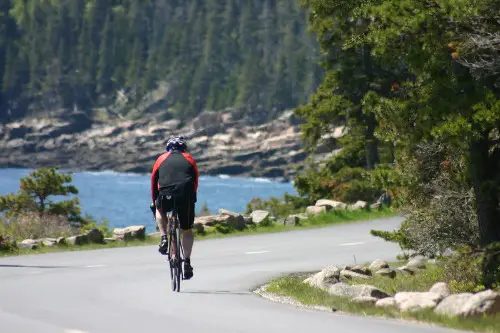
E-bikes have exploded in popularity, but that doesn’t mean they’re welcome on every path. As of 2025, national parks are enforcing strict e-bike regulations that vary by park, but most now limit them to roads and select multi-use trails. E-bikes are motorized vehicles under federal rules, and not all trails are designed to handle them safely. Conflicts with hikers and traditional bikers have increased, prompting these new boundaries.
In places like Grand Teton and Bryce Canyon, you’ll now find updated trail maps specifically marking where e-bikes are allowed. Class 1 e-bikes (pedal-assist only) have the broadest access, but Class 2 and 3 are often banned from trails entirely. Be sure to check local regulations before you unload your bike. The goal is to balance accessibility with preservation and safety.
11. Reserve Campsites Last-Minute
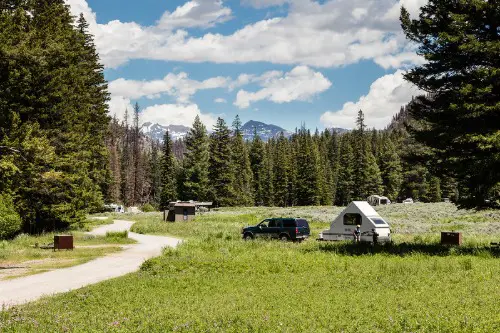
If you’re used to rolling into a national park and snagging a campsite the day-of, 2025 might throw you a curveball. Many parks have now transitioned to fully reservation-based camping systems, with same-day availability largely a thing of the past. This change comes in response to record visitation and chaotic first-come-first-served scrambles. It’s all about managing crowd control and improving fairness.
Sites in places like Yellowstone, Arches, and Shenandoah now book out months in advance through recreation.gov. Walk-up sites are almost nonexistent, especially in peak season. Rangers say it reduces conflict and congestion, but it does mean spontaneous getaways are harder. Planning ahead is officially the new norm for sleeping under the stars.
12. Collect Natural Souvenirs
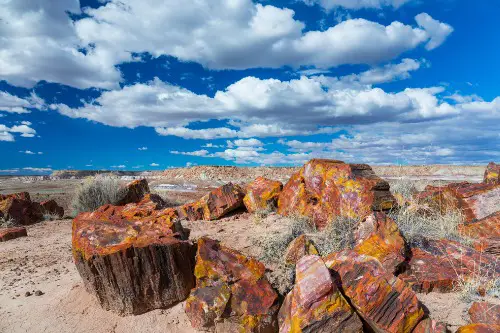
Grabbing a rock, pinecone, or flower as a keepsake might seem harmless—but in 2025, it’s strictly prohibited in all U.S. national parks. These tiny souvenirs add up, especially when you consider the millions of visitors each year. What starts as a small, personal memento can slowly erode landscapes and habitats. And in some parks, like Petrified Forest or Death Valley, taking items is actually a federal offense.
The NPS urges visitors to “take only pictures, leave only footprints,” and they mean it. Even something as small as lichen or a handful of sand can play a critical role in an ecosystem. Some parks have started issuing citations for even minor infractions. So instead of pocketing that shiny rock, snap a photo and leave it be.
13. Hike Without a Permit in High-Traffic Areas
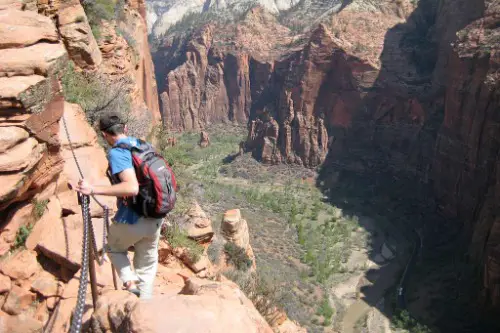
Permits used to be just for backcountry adventures, but in 2025, more parks now require them for popular day hikes too. Iconic trails like Angels Landing in Zion and Half Dome in Yosemite have permit systems due to overcrowding and safety concerns. This model is expanding to other high-traffic hikes, especially those with narrow paths or steep drops. The goal is to protect both visitors and the environment.
In some cases, permits are free but must be reserved in advance through online lotteries. Rangers monitor these trails more closely now, and hiking without a permit can result in fines or removal. The new system limits how many people are on the trail at once, easing strain on the ecosystem. If you’re planning a bucket-list hike, check if a permit is needed before you lace up.
14. Use Soap in Natural Water Sources
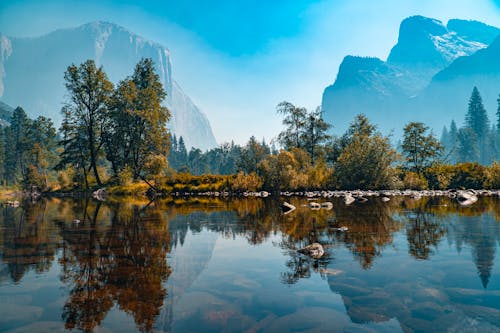
That biodegradable soap you packed? Still not okay to use directly in lakes, streams, or rivers—especially not in 2025. The NPS has tightened restrictions on washing anything in natural water sources, even with “eco-friendly” products. These substances can harm aquatic life and disrupt delicate water chemistry, no matter how gentle they claim to be.
Most parks now require visitors to carry water at least 200 feet away from any source for washing. That includes doing dishes, bathing, or cleaning gear. Even trace contaminants from sunscreen or bug spray are a growing concern for park biologists. It’s a simple shift in backcountry hygiene that makes a big difference for water quality.
15. Drive Through Without a Reservation
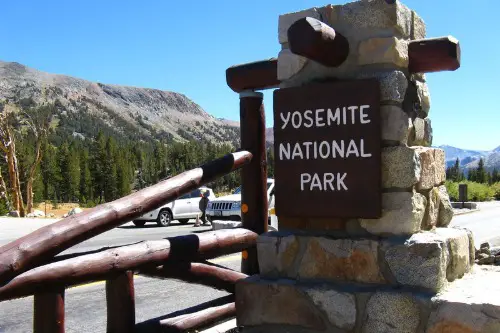
Some of the most popular national parks now require reservations just to enter—even if you’re not planning to hike or camp. As of 2025, timed-entry systems have expanded to include parks like Glacier, Rocky Mountain, Arches, and Yosemite during peak months. These systems were tested during the pandemic and proved successful in reducing congestion and improving visitor experience. So now, they’re here to stay—and growing.
You’ll need to book your entry window in advance online, sometimes months before your visit. Showing up without one can mean being turned away at the gate. It’s a major change from the open-access model of the past, but it helps protect sensitive environments and visitor safety. Think of it like getting tickets to a concert: no reservation, no entry.
16. Launch Balloons or Sky Lanterns
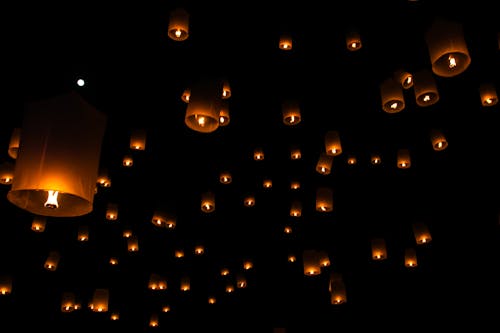
Releasing balloons or sky lanterns might seem like a picturesque way to celebrate a moment, but in 2025, it’s strictly forbidden in national parks. These floating objects often become dangerous litter, harming wildlife and increasing fire risk. Even biodegradable options are banned, as they still pose threats to animals that ingest or get tangled in them. Fire-prone parks like Sequoia and Joshua Tree have led the charge in enforcing these rules.
Park officials say these launches leave more than just memories behind—they contribute to a growing waste problem in otherwise pristine areas. Rangers have found balloon debris miles from roads, entangled in trees or scattered across trails. The ban now covers all national parks, with signage and educational outreach stepping up in peak seasons. A better alternative? Celebrate with photos, not flying trash.
17. Host Unpermitted Events
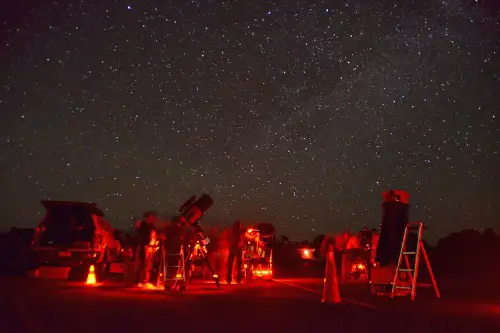
In 2025, gathering your group for a birthday bash, wedding ceremony, or group hike without a permit is no longer acceptable in national parks. Even small, informal events are now under stricter scrutiny due to increased foot traffic and resource strain. The National Park Service requires advance approval for most organized activities, including yoga classes, meetups, or photography workshops. The threshold for “group” events is lower than you might expect—sometimes as few as 10 people.
Rangers are working to minimize wear-and-tear on popular locations that have become impromptu event venues. Parks like Zion and Grand Canyon have implemented new rules limiting where and when events can take place. Violators risk citations, removal, and even bans from future park use. If you’re planning a gathering, check the fine print—and don’t assume it’s allowed just because it’s outside.
18. Set Up Hammocks on Trees
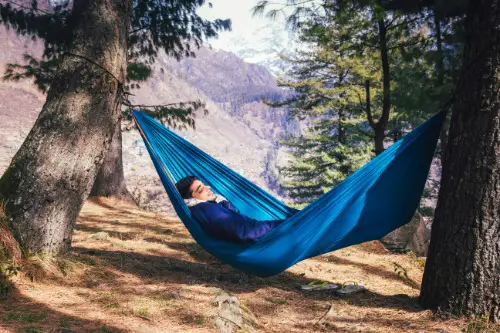
Those relaxing hammock shots you see all over Instagram? As of 2025, hanging hammocks from trees is banned in many national parks unless designated anchors are provided. The strain on bark and branches—especially in sensitive alpine or desert areas—can permanently damage native species. Even using tree-safe straps doesn’t guarantee protection for every environment.
Parks like Shenandoah and Great Smoky Mountains now post clear signs restricting hammock use near campgrounds and trails. In some areas, hammocks are still allowed, but only with freestanding frames or approved posts. Visitors are encouraged to leave the hangouts at home or use ground shelters instead. It’s a bummer for hammock lovers, but better for long-term forest health.
19. Swim in Off-Limits Lakes or Hot Springs

That crystal-clear lake or steaming hot spring might look inviting, but in 2025, many once-accessible water spots are now strictly off-limits. This isn’t just about visitor safety—although that’s a factor—it’s about protecting delicate ecosystems and fragile water chemistry. Swimming introduces sunscreen, bug spray, and soap residues that can harm aquatic species. In thermal areas like Yellowstone, unauthorized entry can also cause burns—or worse.
Some lesser-known lakes and springs in places like Olympic and Lassen Volcanic are now fenced off or monitored with motion-triggered cameras. Violations can lead to fines, bans, and even prosecution for environmental damage. The water may look pristine, but the consequences of entry can be anything but. Admire these wonders from a distance—it’s what keeps them beautiful.
20. Leave Painted Rocks or “Kindness Stones”

The once-wholesome trend of leaving painted rocks with inspirational messages is now discouraged—and in many parks, outright banned. These so-called “kindness stones” can disrupt natural settings, introduce foreign materials, and encourage off-trail wandering. While well-intentioned, they’re now viewed as a form of littering by the National Park Service. In 2025, parks are removing them and asking visitors to stop the practice altogether.
Even biodegradable paints or sealants contain chemicals that don’t belong in wild spaces. Plus, the trend has sparked a kind of “decorative arms race,” with visitors creating rock displays or leaving stacks in sensitive zones. What started as a small gesture now causes big headaches for land stewards. The new message: leave inspiration in the guestbook, not the landscape.
21. Use Trail Cameras or Motion Sensors
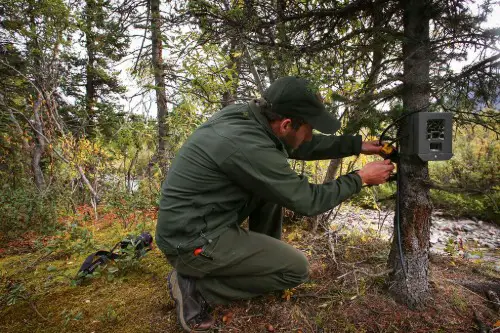
Whether for wildlife watching or documenting a backcountry adventure, personal trail cameras are now prohibited in most U.S. national parks. The NPS considers these devices invasive, citing privacy concerns and disruption of natural animal behavior. Rangers also worry about the accumulation of unsanctioned equipment left overnight or forgotten altogether. In 2025, trail cameras are treated much like drones—fun tech, but off-limits in protected areas.
The crackdown follows several years of increased use by hobbyists and amateur biologists. While they may seem harmless, the cameras can stress animals or influence their movement patterns. Plus, there’s concern over visitors unintentionally recording other parkgoers without consent. If you’re looking to spot wildlife, stick with binoculars and patience instead.
22. Hike Solo in Certain Remote Zones
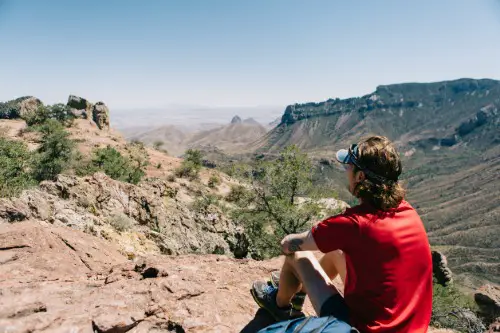
Solo hiking is a rite of passage for many adventurers, but in 2025, some national parks now prohibit it in particularly remote or hazardous backcountry areas. The policy shift comes in response to a rise in emergency rescues, injuries, and even deaths. Parks like Denali, North Cascades, and Grand Canyon have started requiring party minimums for high-risk zones. It’s all about reducing rescue load and ensuring hiker safety.
Solo permits are still available in some regions but often require additional training or gear checks. GPS trackers and emergency beacons are sometimes mandated as well. Rangers say these measures aren’t meant to punish, but to keep both visitors and search-and-rescue crews safe. If you value solitude, choose designated solo-safe zones—or bring a friend and share the adventure.
23. Forage for Mushrooms or Edible Plants
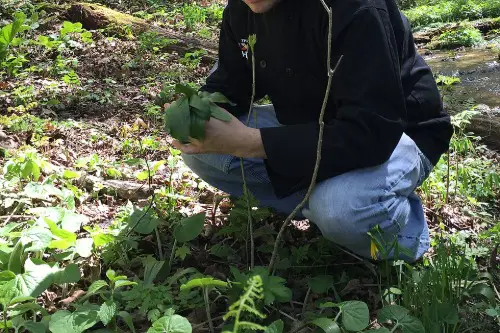
Foraging used to be an obscure hobby, but with its rise in popularity, national parks have had to draw the line. As of 2025, picking mushrooms, berries, or any other wild edibles is banned in most parks, even for personal use. The reason? Overharvesting, habitat disruption, and increased risk of poisoning by amateurs. Native species like morels and huckleberries are especially vulnerable.
While foraging is still permitted on some national forest lands, it’s no longer allowed in places like Olympic, Great Smoky Mountains, or Shenandoah. Rangers report trampled undergrowth, aggressive competition, and disturbed wildlife as a result of forager influxes. Some parks have even had to issue citations for taking “souvenir salads.” The new approach: admire wild foods, but leave them untouched.
24. Park Overnight Outside Campgrounds

If you thought you could sleep in your car in a quiet pull-off, think again. In 2025, overnight parking outside of designated campgrounds is no longer allowed in most U.S. national parks. This includes trailhead lots, scenic overlooks, and picnic areas. With the rise in van life and car camping, parks are struggling to manage sanitation, crowding, and safety issues from unofficial overnighters.
Increased enforcement includes patrol sweeps after dark and parking lot closures to prevent overnight stays. Parks like Yosemite and Zion have already implemented strict ticketing policies for violators. While stealth camping used to fly under the radar, it’s now squarely on rangers’ maps. Plan ahead and book a site—or risk a wake-up call and a fine.
25. Use Artificial Light for Wildlife Viewing
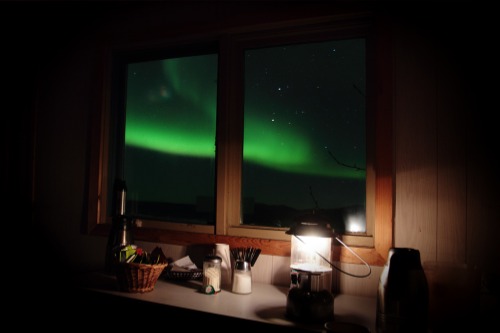
Flashlights, headlamps, and car beams might help you spot an owl or a deer—but in 2025, using artificial light to view or photograph wildlife is officially banned in most national parks. This practice, known as spotlighting, disrupts animal behavior and can trigger stress responses in nocturnal species. Rangers have observed increased flight behaviors and even collisions with vehicles. The new regulations are meant to preserve the natural rhythm of the wilderness.
Some parks now offer guided night hikes where red lights are used sparingly and responsibly. Otherwise, visitors are encouraged to observe wildlife during daylight hours. Using artificial light near nesting sites or water holes is especially prohibited. Nighttime is when the wild gets wild—let it happen without interruption.
26. Charge Devices from Unauthorized Sources
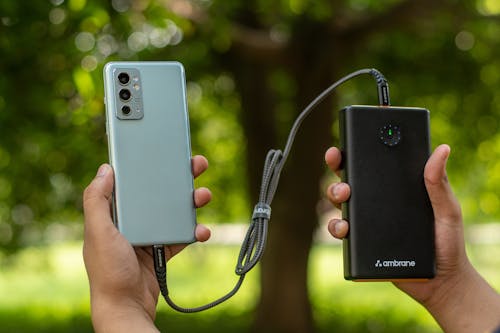
In 2025, plugging your phone, power bank, or portable fridge into random outlets around national parks is no longer allowed. Charging stations at visitor centers or campgrounds are now clearly marked and strictly regulated. Rangers found that unauthorized charging can overload circuits, pose fire risks, and limit accessibility for critical park equipment. Some visitors have even unplugged emergency or climate-control devices to power up their electronics.
Many parks are transitioning to solar-powered charging hubs in common areas, available during daylight hours. Visitors are advised to bring portable solar panels or extra batteries for longer stays. The casual plug-in at a ranger station or bathroom outlet? No longer an option—and in some places, punishable by fine. It’s part of the broader effort to modernize infrastructure without compromising safety.
27. Carve or Stack Rocks

It might seem harmless to etch your initials on a rock or stack a few stones into a tower—but in 2025, both actions are banned across most national parks. These behaviors alter the natural landscape and encourage copycat actions from other visitors. Rock cairns can mislead hikers, and carvings deface irreplaceable geological features. Parks like Arches and Canyonlands have had to allocate time and staff just to undo the damage.
Even “zen stacks” in creek beds disrupt habitats for insects and fish. Rangers now dismantle these markers on sight and post signs asking visitors to refrain. It’s not about being a killjoy—it’s about letting nature be nature, untouched and wild. The message is simple: leave no trace, not even a stack.
This post 15 Things You Can No Longer Do at National Parks in 2025 was first published on American Charm.


